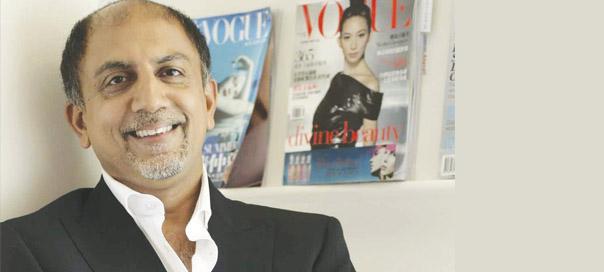With more and more global luxury brands entering the Indian market, consumers don’t have to go overseas to indulge themselves. Alex Kuruvilla, MD, Conde Nast India tells Meghna Sharma where India is headed in the luxury circuit as aspirations and disposable incomes rise.
Which categories in the luxury brand sector have seen significant growth in India recently?
Luxury automobiles, watches, wines and spirits have witnessed significant growth. This is a result of many factors: a willingness to invest in India upfront, customizing products to suit the market, offering products at multiple price points to appeal to a wider demographic and effectively targeting the luxury consumer through channels that reach them without diluting the message and brand equity. Of course, India’s growing aspirations, increasing disposable incomes and higher exposure to international trends have been a catalyst.
What are the problems faced by international brands while launching in India?
The challenges are lack of infrastructure, an appropriate retail environment and space. High duties and taxes act as a hurdle to competitive pricing. Moreover, a majority of the Indian affluent population is still getting familiar with brands and needs to be educated. Brand building is the need of the hour. However, this also remains a challenge as there are very few media that reach and communicate with the affluent effectively–be it in the offline or online space.
How different are Indian buyers from their global counterparts?
While the affluent Indian is increasingly becoming more global, certain characteristics are uniquely Indian and impact luxury brands across the spectrum. While willing to pay for luxuries, the Indian consumer constantly looks for value in every transaction. Further, there are blurred lines between luxury and high street, so the consumer does not have a clear understanding of the hierarchy of brands and often uses them interchangeably. Her dressing is occasion-driven and the sari is a critical part of her wardrobe, which hinders adoption of luxury readyto- wear brands. However, change is clearly being driven by Gen Y, which is more exposed, more brand aware, and more experimentative. Luxury brands see a larger proportion of sales coming from younger consumers.
It is a popular notion that women like to shop till they drop. But according to a study done by Conde Nast, men are happy to spend, while women look for deals. What is the insight here?
Both men and women spend on luxury; however, the attitudes, behavior and category choices are different. Indian men are more comfortable with Western fashion. Therefore, men’s ready-to-wear continues to grow. Men often act as introducers of luxury in a household and encourage their spouses to adopt luxury brands. Cars, watches and alcohol are categories traditionally driven by men–and this continues. Indian women continue spending on accessories, Indian designer wear, beauty products and jewellery. The value proposition is inherent to all Indians, cutting across gender, age and region.
Who influences Indian buyers the most?
There are three key influencers: Hollywood and Bollywood celebrities, fashion experts and international titles such as ours, which form a bridge between all these sources. Of these, magazines are most critical as they transmit celebrity trends and choices to a broader base. In case of magazines like Vogue, the international credibility and reputation makes readers look up to them as experts in areas such as fashion and beauty.
Is the Indian buyer fully aware about various brands and what they stand for, or is he/she just excited by the brand name?
There is a small set of Indian consumers (who we classify as the Old Establishment) that has traditionally been indulging in luxury. The larger audience is just getting to know brands–by name and logo. The ‘USP’ of each, be it craftsmanship, heritage or history, is still to be defined by the consumer. Magazines like Vogue and GQ play a key role in educating buyers and helping them evolve their personal style.
How do luxury brands see the Tier-II cities in India?
Most luxury brands in India are observing consumer behaviour and purchasing patterns in Tier-II cities. While there exists a definite potential, there is still sufficient traction to gain in the major metros before expanding their retail footprint. Some brands are testing the waters through trunk shows and exhibitions while some feel that they are already getting access to these consumers when they travel. The overall strategy seems to be consolidation in metros with plans to expand into Tier-II over the next 5-10 years.
What is the future of luxury brands in India?
Quite bright! Though the base is small ($4.7 billion in 2010), luxury in India is expected to triple by 2015. The demography of the country, growing incomes and coming of age of Gen Next will catalyse the growth of luxury in India. A word of caution – this is a long term market – and only those willing to invest with a sufficient risk appetite will reap the rewards.
























